 |
 |
 |
| |
ACTIVITY AND RESISTANCE CHARACTERIZATION
OF THE HIV CAPSID INHIBITOR LENACAPAVIR
|
| |
| |
CROI 2021 March 6-10 Reported by Jules Levin
Christian Callebaut1, Laurie VanderVeen1, Nicolas Margot1, Vidula Naik1, Martin Rhee1
1Gilead Sciences, Inc, Foster City, CA, USA
Background: Lenacapavir (LEN) in vitro resistance selections identified resistance associated mutations (RAMs) in HIV-1 capsid (CA) associated with reduced susceptibility (L56I, M66I, Q67H, K70N, N74D, N74S, and T107N). Characterization of mutants in single-cycle (SC) assays indicated that most of these RAMs were associated with reduced replication capacity (RC). We studied LEN antiviral activity in isolates containing LEN-RAMs in SC and multi-cycle (MC) assays to determine their impact on RC across several assay formats and to explore their potential cross-resistance with protease inhibitors (PIs). In addition, the activity of LEN was determined in previously untested HIV-1 subtypes.
Methods: Mutations were inserted in the pXXLAI proviral clone by site-directed mutagenesis; replicative viruses were generated by transfection. Viruses (6 single- and 4 double-mutants) were tested in 2 different MC formats to determine susceptibility to LEN and controls. Mutated sequences were used to generate SC test vectors that were tested in a Gag-Pro assay, along with isolates with diverse HIV-1 subtypes (A, A1, AE, AG, B, BF, C, D, G, and H) (Monogram).
Results: Antiviral activity and susceptibility in the SC assay confirmed the previously observed data, with Q67H leading to a 4.6-fold reduction in susceptibility to LEN and 58% RC in comparison with wild-type (WT); M66I showed a >2000-fold reduction in susceptibility and 1.5% RC. Although LEN susceptibility data were obtained for all 10 mutants in the SC assay, in the more restrictive MC assay, data were only obtained for 6 of the 10 mutants, with 4 lacking measurable infectivity in the assay, particularly the M66I and M66I + Q67H mutants. Overall, LEN susceptibility values in the MC assay were similar to those in the SC assay. Susceptibility to the PIs darunavir and atazanavir was unchanged from WT in the SC and MC assays. LEN showed similar potency across diverse subtypes in the SC assay, with EC50 values (range: 124 - 357 pM) on par with that of the WT control (290 pM).
Conclusion: Susceptibility to LEN in single-cycle and multi-cycle assay formats has expanded our understanding of LEN resistance in vitro and confirmed the decreased RC of the mutant viruses. In addition, mutants with resistance to LEN were found not cross-resistant to PIs, and LEN susceptibility was similar across isolates with diverse subtypes. These data emphasize the beneficial profile of LEN as a potential treatment option for people living with HIV.
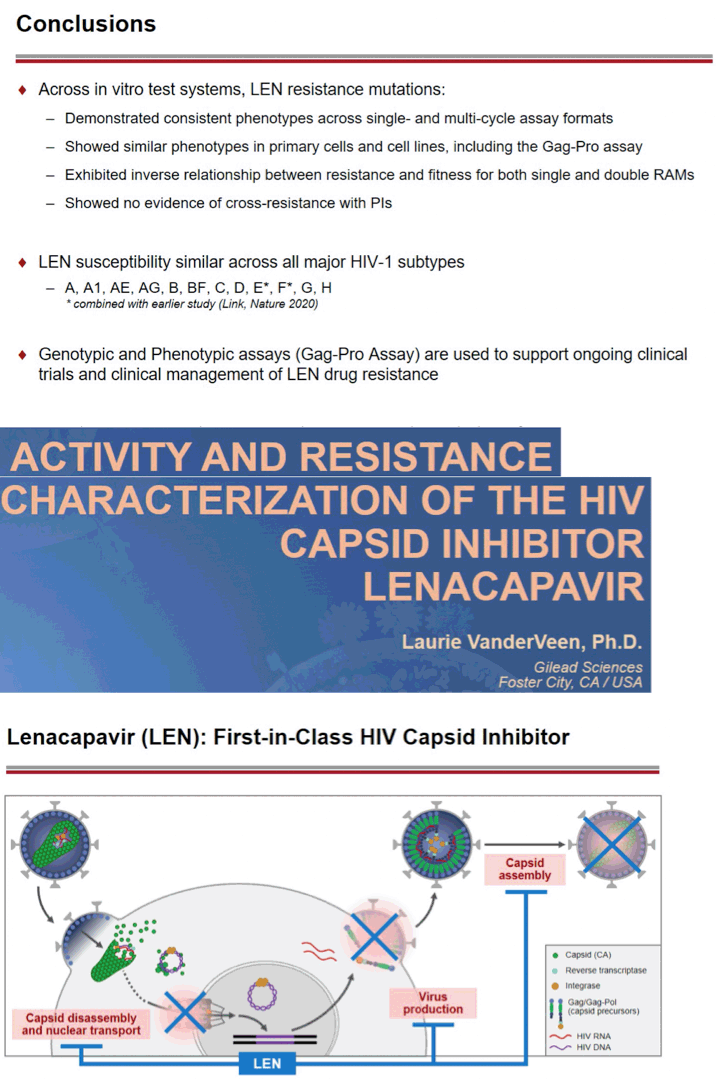
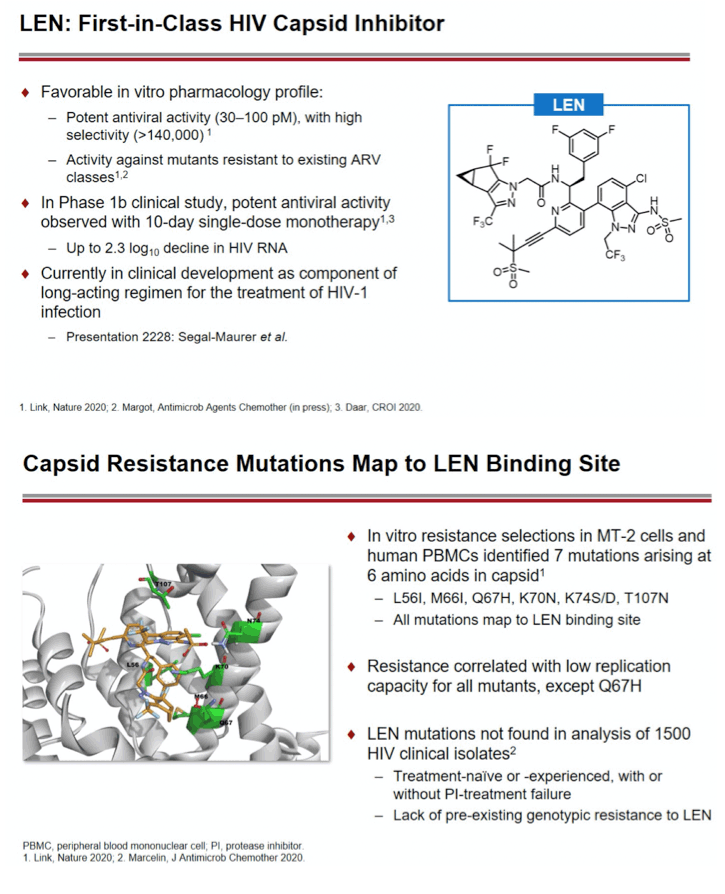

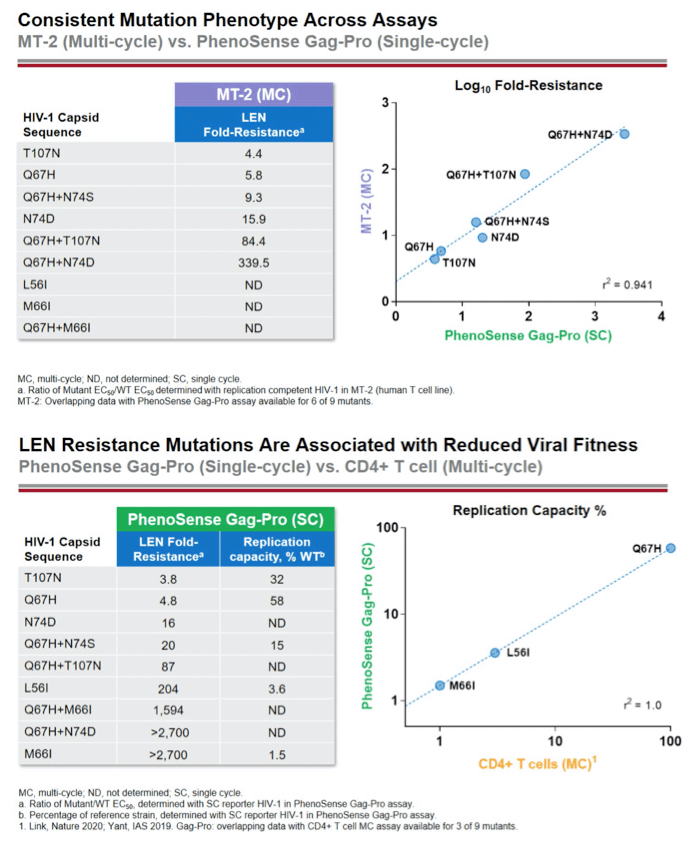
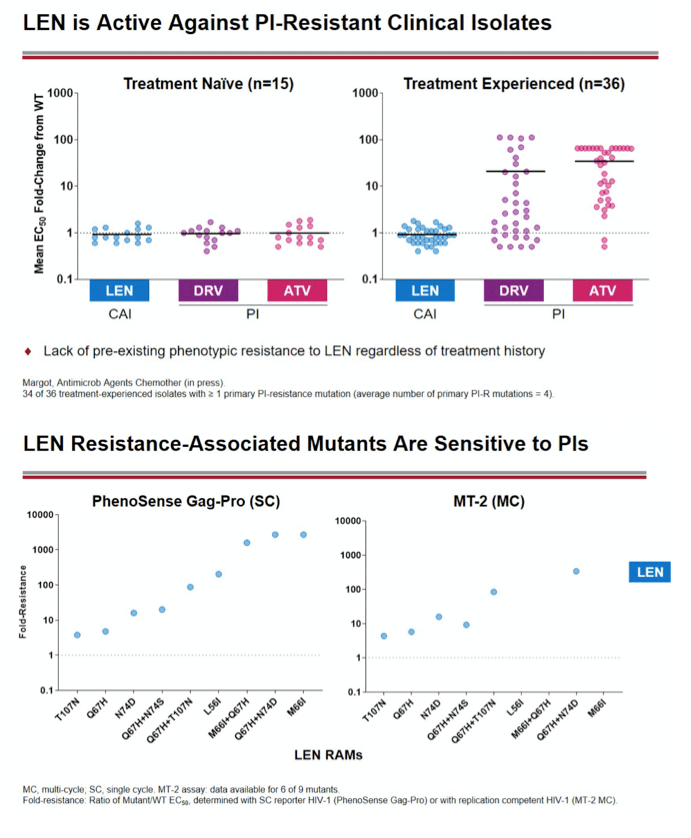

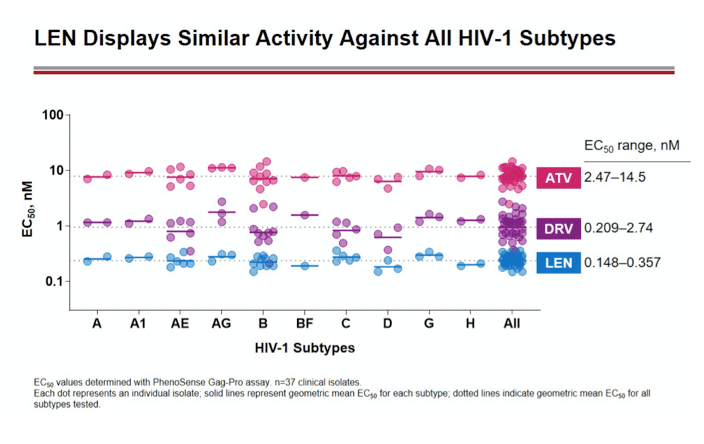
|
| |
|
 |
 |
|
|